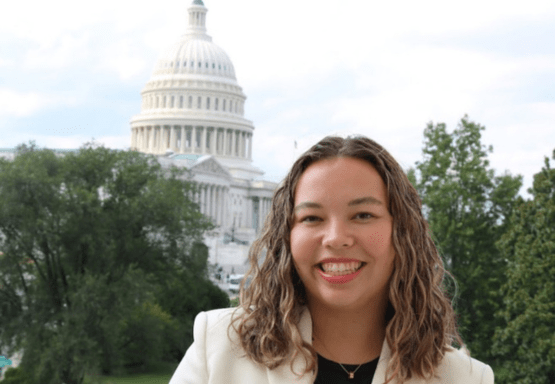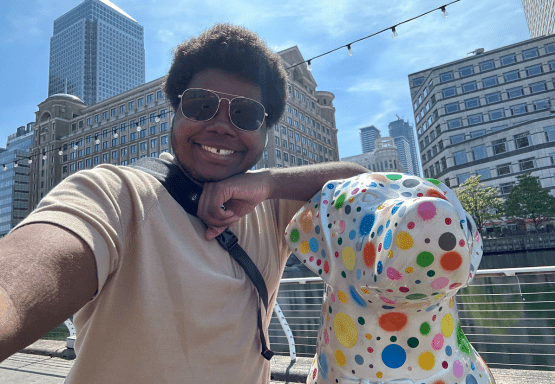The following content was originally published in MSUToday.
Jordan Cash, assistant professor in James Madison College, focuses his teaching and research at the intersection of American political thought and constitutionalism. Cash examines how the constitutional structure of American political institutions effects the authority and behavior of individuals operating within those institutions.

Sunday, Sept. 17 is Constitution Day — but what is it exactly? Jordan Cash, assistant professor of political theory and constitutional democracy in Michigan State University’s James Madison College, explains this lesser-known holiday and its importance.
What is Constitution Day?
Constitution Day celebrates the signing of the Constitution of the United States, which occurred on Sept. 17, 1787, in Philadelphia at the end of the Constitutional Convention. Over the course of four months, 55 delegates from 12 of the original 13 states (Rhode Island did not send any delegates) debated, strategized and compromised to create what we now know as the U.S. Constitution, creating the basic structures and delineating the powers of the national government.
What is the history of Constitution Day?
Unlike the Fourth of July or even Presidents Day (which is officially known as Washington’s Birthday), there was not much of an official observance of Constitution Day before the 20th century. In the 1930s and 1940s, there was a movement to have a day commemorating American citizenship, and by the end of the 1940s, many states were issuing proclamations in honor of Constitution Day. In 1953, Congress and then-President Dwight Eisenhower designated Sept. 17 to 23 as “Constitution Week.”
But the modern celebration of Constitution Day did not come into being until 2004 when former Sen. Robert Byrd of West Virginia pushed for legislation officially designating Sept. 17 as Constitution Day. That legislation mandates that all schools that receive federal funding — including universities like Michigan State, as well as federal agencies — must hold an educational program about the Constitution on Constitution Day, unless it falls on a weekend like it does this year, in which case it can be held the week before or after.
How is the Constitution different than the Declaration of Independence?
Abraham Lincoln famously described the Constitution as the “frame of silver” adorning the “apple of gold” that is the Declaration of Independence and, specifically, the declaration’s promise of equal liberty to all. The declaration and Constitution were written 11 years apart — the declaration in 1776 and the Constitution in 1787 — and the declaration notably did not lay out a plan of government. But despite this time difference, we can see that these two documents complement each other. The declaration lays out the foundational principles of the United States as immortalized in what is perhaps the most famous sentence in American history: “We hold these truths to be self-evident, that all men are created equal, that they are endowed by their Creator with certain unalienable Rights, that among these are Life, Liberty, and the Pursuit of Happiness.”
If the preservation and protection of our natural rights as human beings is the purpose of government according to the declaration, the Constitution aims to create a government that can effectively achieve that end. Of course, the Constitution has not always done that perfectly, as we can see by the fact that amendments were required not only to enumerate a Bill of Rights, but also to end slavery and ensure the right to vote for women and underrepresented racial groups. Nonetheless, the fact that these changes were made demonstrates how we can see the declaration and the Constitution as in alignment with each other. The former sets the aspirational goal of liberty and equality toward which we continue to strive, and the latter establishes the institutions that enable us to continue pursuing that goal.
What is something about the Constitution people may not know?
There is a common misconception that the Bill of Rights was a part of the original Constitution, but it was not included initially. This was a major complaint of the individuals who opposed the ratification of the Constitution in 1787 and 1788 — known as the Anti-Federalists — as they argued that a Bill of Rights was absolutely essential to preserving liberty. While the Anti-Federalists lost the ratification debate, they won when it came to the Bill of Rights, as ten amendments were added to the Constitution in 1791 and constitute what we now call the Bill of Rights.
Notably, another amendment that was introduced with the Bill of Rights went unratified for over 200 years until 1992 when it was ratified as the Twenty-Seventh Amendment — preventing members of Congress from granting themselves pay raises during the current session — which, at the moment, is the last amendment added to the Constitution.
Relatedly, people may be surprised to know that the U.S. Constitution is the oldest and shortest written constitution in the world, even shorter than all the individual state constitutions.
What events will be on campus for people to celebrate in person or virtually?
James Madison College is hosting a Constitution Day event on Thursday, Sept. 21 at 5 p.m. in Club Spartan, which is located on the third floor of Case Hall. Verlan Lewis of Utah Valley University and Hyrum Lewis of Brigham Young University-Idaho will be talking about their new book “The Myth of Left and Right: How the Political Spectrum Misleads and Harms America.”



.png?h=384&iar=0&w=555)


